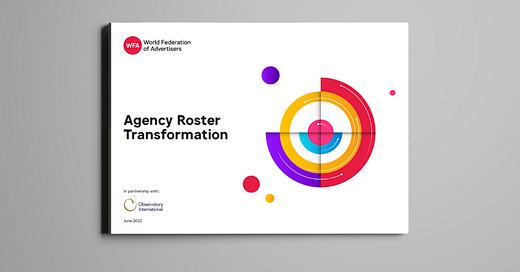New research from the World Federation of Advertisers and Observatory International suggests that 80% of advertisers now have an in-house agency, up from 57% just two years ago.
The survey links dissatisfaction with current agencies with the rise, with 75% of respondents saying they are only “somewhat satisfied” or less with their current external media or advertising agency. In accompanying press material, the survey cites Tracy Stallard, global VP, experiential and founder of AB InBev’s in-house agency draftLine, who told researchers that draftLine allows the brewer to “maximize the effectiveness opportunity of bringing content and media closer together”. She also said that its IHA allowed AB InBev to “better understand our consumers”, “having creativity closer to our business”, and “diversify our marketing talent to match the increasing specialisation trends we see in the industry”.
Earlier this month, Stallard gave a more extensive interview to Marketing Week about draftLine in which she credits the IHA with a transformational change in which creativity is ‘democratised’ across the business, creating stronger links between marketing, sales and finance.
“Having creativity at the centre of the business has been really transformational for us,” she said. “We have people from finance, sales and marketing all sitting at the same table, all having discussions about how we can be servicing consumer needs better.”
While it’s tempting for the ad press to jump on the dissatisfaction angle of the story, perhaps the above better explains the continued rise of in-housing. These are all opportunities and advantages that members of our community have frequently cited - the IHA as the ‘connective tissue’ for the business, the access to all departments allowing for pro-active problem-solving by the IHA, the enhanced opportunities for collaboration that working with colleagues brings.
In 2020, the WFA did another piece of research - on Global Trends in Creative In-Housing. This found that “moving creative work in-house is delivering cost efficiencies (greater than 30% in some instances), better integration (64%) and increased brand and business knowledge (59%). Fifty-five percent also reported that in-house teams had quicker and more agile processes”. These competitive advantages only became more apparent during lockdown. Here perhaps is the real cause of the rise of in-housing and, with it, a sense that external rosters on their own are less able to deliver what is required.
But what also comes through in the survey is that there is no, single right model for all. Every business is different and everyone needs slightly different things from their IHAs and external agencies. Finding the right mix for your business and being very clear about the remit of your IHA remains key.
Great Process = Great Work
We have had a huge number of requests for the recording of our session on process earlier this month with many of you planning to go through it with your teams. If you would like the recording, please email me on patrickb@wdc-london.com and I will share it.
Upcoming
Sam Jacobs will joining us at our IHALC One-Day summit on September 28 in London. Having previously been CD for Oliver's in-house team at the Guardian, Sam is now leading global and UK accounts including McDonald's, Unilever, Philips and more. We also have a session on econometrics for IHAs with Louise Cook of Holmes and Cook and Nicky Russell on the challenges of recruiting the right creative talent in-house. Full programme and details on how to register here





